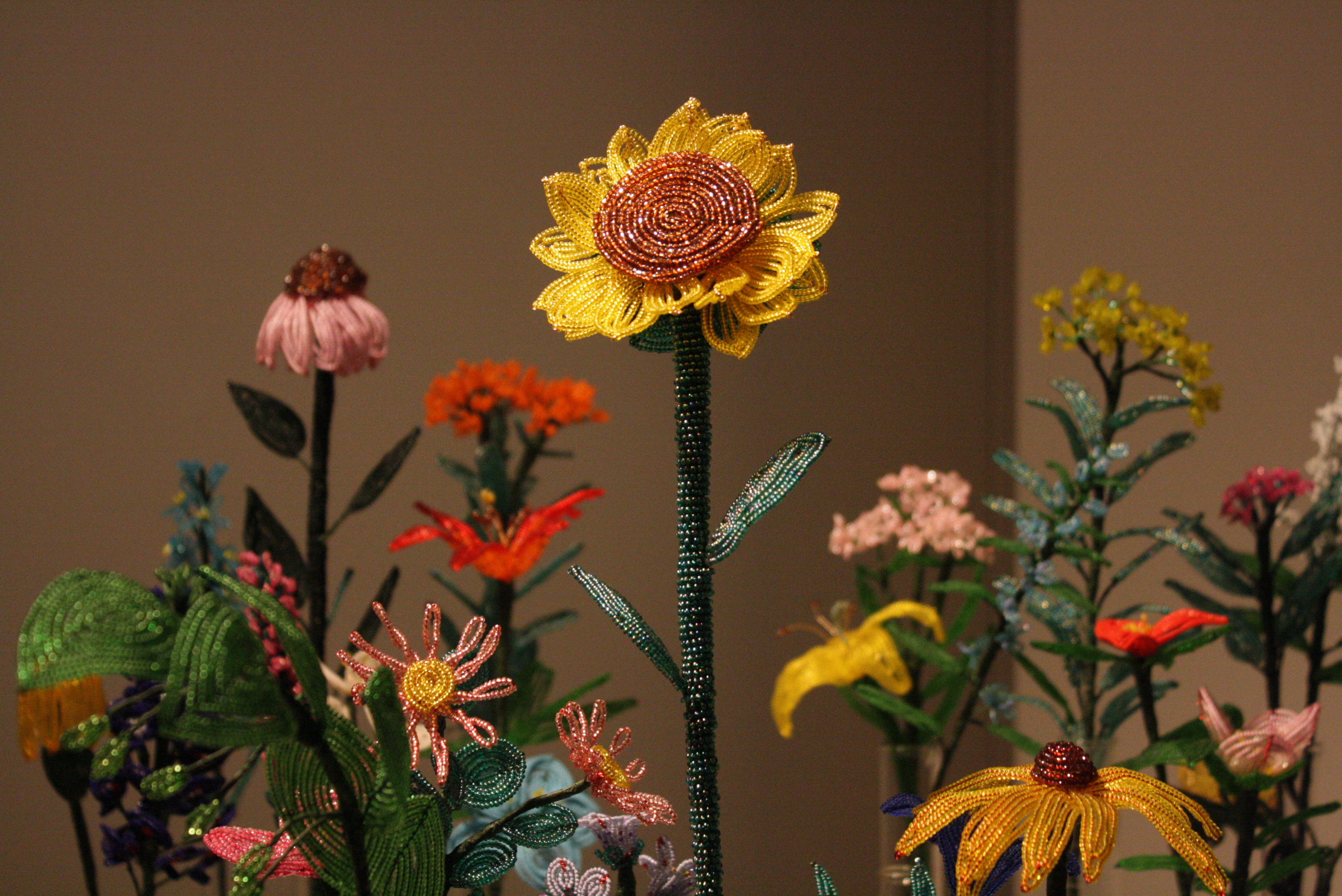
The following was taken from the artist talk of Chicago artist Lindsay Obermeyer at the opening reception of Creation and Co-Existence: The Respectful Interdependence of All That Is at the Mary-Frances and Bill Veeck Gallery at the Catholic Theological Union. Along with the work of Lindsay Obermeyer, the work of master textile artist Akemi Nakano Cohn is on view at the Catholic Theological Union through September 14, 2011.

“It’s really an honor to be back here. Akemi and I first met, I don’t know if you remember, at the Textile Arts Center which used to exist on the north side of the city over on Diversey between Sheffield and Halsted. I’ve seen her work and tracked her work for years and have never had the pleasure and honor of showing with her. So, this is particularly wonderful. But, also added meaning to that for me is the fact that the last time I exhibited here was when I came to install the show three days before my mom passed away. And the work that is actually here is a tribute to my mom–that’s what it started out as. The word ‘bead’, the etymology of it, translates to ‘prayer’. So, in this swirl of ideas that go around in my head, I’m thinking about that any prayers to my mom, because I not only lost my mom, but I lost my best friend. It was a double loss. Then, I’m also thinking about the history of the word bead, the prayers that I’m giving and the idea of these being used in nanotechnology and these size beads are being used to deliver chemotherapy treatments. So, the word ‘bead’ means ‘prayer’, but it is also being used to deliver very small treatments of chemotherapy directly to cancer cells so that they can eradicate the cancer cells and keep the other tissue healthy. Why is that important to all of this? Because I’ve had cancer twice.”

“So, I’m thinking about all of these ideas and when I was thinking about my mom and how I was going to honor her, I started to think about the tradition of funerary wreaths. There is a tradition of taking beads to make funerary wreaths that dates back five hundred years. The beads in Italy that were rejected were taken by local artisans, transferred to wire, and manipulated into floral arrangements and placed on grave sites. So, there’s that connection. Then the connection built up because seven years ago I became a master gardener through the University of Illinois extension and I volunteer in gardens all over the state of Illinois–mostly in the Chicago region–and have been involved in some prairie installation sites. It’s wonderful because we’re bringing native wild plants to different regions to help with the co-existence that has been eradicated by humans for centuries here. But in doing that, I also wonder if we’re, perhaps, posting a problem because, as you can see in Akemi’s work all of these wonderful rabbits and coyotes and other animals that exist…”
“Well, for example, I helped put in a prairie in the northern Chicago area. And it’s right by a Union Pacific Railroad. They spray in that area to the point where we couldn’t put in any beehives because the toxins that they use to kill the plants and clear the tracks could be accidentally be picked up by the bees and kill them. So, then I keep thinking, here I am in the middle of an urban region of Chicago, near my home five blocks away, and here I am coming across garden snakes, and bunny rabbits–lots of bunny rabbits now–and bring in a prairie that they are going to want to naturally use. And to find them they are having to cross railroad tracks and heavy traffic areas. So, I wonder if this is actually a good thing because man intervened to remove, and then is it really wise always to replace? And that’s not a question I can answer, but it’s one that I ponder and I bring to you to ponder and you look at the work. I’ve already been asked a few times, and it does take a long time. Each piece takes about a day–each flower. Some, like the sunflower, take me three solid days of twenty-four hours of work involved. It is a very, very meditative process. So, if you’re Catholic or perhaps Buddhist, as you would work with your beads to help you think of prayers and council things, I’m doing the same. I think about my mom, I think about the animals–I think about all of those things as I’m working. And the piece will evolve and grow. When it leaves here it will go to Grand Rapids Michigan. There’s a large art competition up there called Art Prize. I’m very excited because it’s this huge quarter of a million jackpot prize if you can get all the votes. It’s like American Idol for artists. [laughs] So, what I’m really honored about is to have the opportunity to show it as it grows. Everyday I’m making new flowers in my studio. I’d like to try–I’m not saying it’s going to actually happen–try to recreate all the flowers of the Midwest prairie, which is quite a few. I think there are only 25 currently done right now.”
For more information visit Lindsay Obermeyer’s website at www.lbostudio.com. For more information about the Catholic Theological Union visit www.ctu.edu.
This artist talk was edited for clarity and length.





